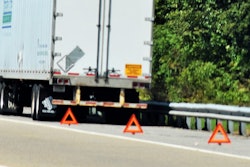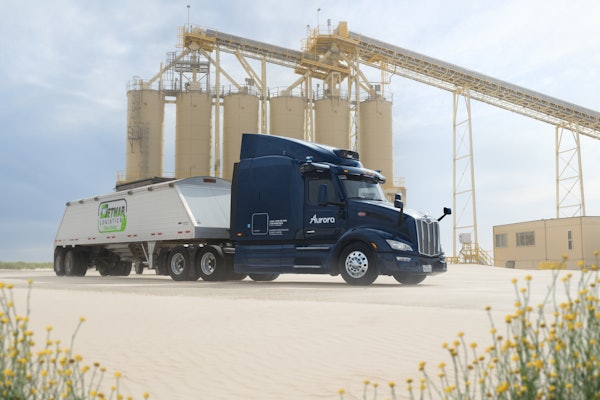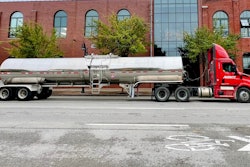Trucking news and briefs for Wednesday, March 5, 2025:
Autonomous truck maker plans driverless operations this year
Bot Auto, an autonomous truck tech developer, has announced its schedule to launch driver-out commercial freight operations in 2025.
The milestone will initiate a full-scale pilot program with continuous autonomous trucking operations between Houston and San Antonio, the company noted.
The planned driver-out program will run for a minimum of four months, hauling real cargo for commercial shippers. This initiative represents the deployment phase of Bot Auto's development approach, where periods of deployment are followed by system upgrades based on operational learnings, the company added
"The most predictable breakthroughs are the ones no one predicts," said Dr. Xiaodi Hou, founder and CEO of Bot Auto. "2025 is going to be a big year. Look at what's unfolding across our industry so far: Kodiak demonstrating driver-out capabilities in the Permian Basin, Aurora timing their Driver-Out pilot program, FERNRIDE making strides in Europe, and now Bot Auto setting our schedule. To casual observers, this might seem like another wave of hype, but such synchronized predictions across players isn't orchestrated – it's the most organic forecast of genuine breakthrough. The hardware is ready. The software is ready. And this new dawn will illuminate our industry in 2025. We, Bot Auto, are committed to being in the first row."
Bot Auto said it has achieved remarkable progress with a fraction of resources compared to the rest of the industry, demonstrating the company's practical approach to commercialization and its focus on profitability through technological innovation.
"Since our successful hub-to-hub demonstration last October, our team has focused on building a reliable system with enhanced hardware and software redundancies," Hou added. "Safety is our top priority, we are working with the first responder community throughout Texas. We're taking a proactive approach, employing statistical methods to validate safety, documenting our internal processes, and planning to open-source safety-related datasets to promote transparency."
Bill requiring USPS contractor monitoring revived
After passing the U.S. House in the previous Congress but not progressing in the Senate, a bill that would require the United States Postal Service to increase its oversight of trucking contractors is back in Congress and has once again passed in the House.
The Mail Traffic Deaths Reporting Act would require the Postmaster General to issue regulations that require the Postal Service to collect, track and publicly report information related to deaths and injuries in crashes involving vehicles transporting mail. It was introduced by Rep. Gerald Connolly (D-Virginia) and co-sponsored by Rep. James Comer (R-Kentucky).
In May 2023, Connolly urged the USPS Office of Inspector General (OIG) to investigate the safety of freight contract trucking practices at the Postal Service. The OIG released a report in response to Connolly’s request, which found that the Postal Service doesn’t have a written policy requiring the tracking of trucking contractor accidents and fatalities.
The OIG’s No. 1 recommendation was that USPS establish a method for tracking contractor accident and fatality data and establish corresponding written policies and procedures for such a tracking system.
The Mail Traffic Deaths Reporting Act would codify that recommendation by requiring the tracking and reporting of serious crashes and fatalities related to the transport of U.S. postal mail.
Under terms of the legislation, crash reports submitted to USPS would be required to include detailed information describing, at a minimum, the crash -- including the date, time, location, nature of the crash -- information identifying the contractor, number of injuries, fatalities, and any contributing factors to the crash.
USPS would also be required to establish a database that includes comprehensive information related to deaths and injuries from traffic crashes involving vehicles transporting mail.
After passing the House with a 402-16 vote, the bill will now move to the Senate for consideration.
Michigan's spring weight restrictions begin
The Michigan Department of Transportation (MDOT) and local agencies are enacting spring weight restrictions, an annual move to protect roads.
Effective 6 p.m. Monday, March 3, weight restrictions will be imposed and enforced on all state trunkline highways from the Indiana/Ohio border north to and including U.S. 10 in Ludington in Mason County from the M-116 intersection, then east to U.S. 127 in Clare County, then north on U.S. 127 to M-61, then east on M-61 ending at the intersection of U.S. 23 in the City of Standish, Arenac County.
All state trunklines will have weight restrictions imposed and enforced. State routes typically carry M, I, or US designations.
Michigan and other northern states institute these “frost law” restrictions when roads that have been frozen all winter begin to thaw from the surface downward, causing melting snow and ice to saturate the softened ground. During the spring thaw, the roadbed softened by trapped moisture beneath the pavement makes it more susceptible to damage. This contributes to pothole problems already occurring due to this winter's numerous freeze-thaw cycles.
In Michigan’s restricted areas, the following will apply:
- On routes designated as "all-season" (designated in green and gold on the MDOT Truck Operators Map), there will be no reduction in legal axle weights.
- All extended permits will be valid for oversize loads in the weight-restricted area on the restricted routes. Single-trip permits will not be issued for any overweight loads or loads exceeding 14 feet in width, 11 axles, and 150 feet in overall length on the restricted routes.
- On routes designated as "seasonal" (designated in solid or dashed red on the MDOT Truck Operators Map), there will be a posted weight reduction of 25% for rigid (concrete) pavements and 35% for flexible (asphalt) pavements, and maximum speed of 35 mph for some vehicles.
Drivers must follow the speed limits for weight restricted roads, per state law. Go online for speed restrictions for trucks and the rules for propane fuel delivery and public utility vehicles.
MDOT determines when weight restrictions begin each spring by measuring frost depths along state highways, observing road conditions and monitoring weather forecasts. Weight restrictions remain in effect until the frost line is deep enough to allow moisture to escape and the roadbeds regain stability.
County road commissions and city public works departments put in place their own seasonal weight restrictions, which usually but not always coincide with state highway weight restrictions. Signs are generally posted to indicate which routes have weight restrictions in effect.














